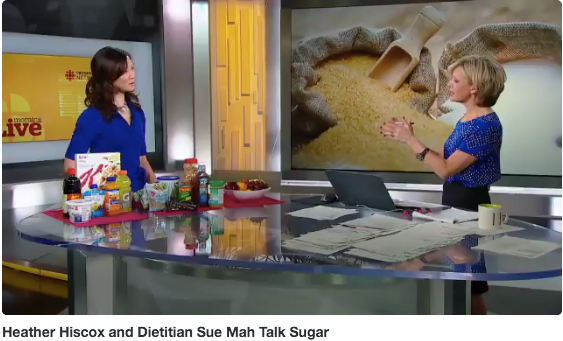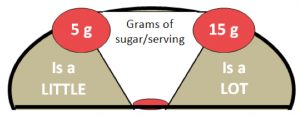
At the One of a Kind Show in Toronto this past week, I was impressed by the number of Canadian food innovations as well as the people and stories behind them. Here are a few products that caught my eye.
Trend #1: Healthy Food Choices 24/7

It can be challenging to find healthy food choices while on the go, at work or at school. Daily Blends is an innovative Toronto-based food tech company that operates automated vending machines stocked with wholesome on-the-go meals and snacks. Some of the offerings include Spicy Tofu with Japchae and Kimchi (I taste tested this and can say it’s absolutely delicious!), Jerk Chicken with Mango Salsa and a Strawberry Chia Pudding.
After immigrating to Canada from India in 2020, sisters and Co-founders Shriya and Purva Gupta recognized a need for fresh, healthy and delicious food 24/7 whether it be available at hospitals, college campuses, malls, office buildings or transit hubs. Combining Shriya’s tech background with Purva’s culinary expertise, the company uses AI software to power Daily Blends smart vending machines and capture real-time inventory / consumer data. Their chef-style meals are made from scratch every day in their Toronto kitchen facility. All unsold food is donated to local food banks and charities.
You can find Daily Blends vending machines at numerous locations including Union Station Bus Terminal (level 2), Highway 407 GO Bus Terminal, University of Toronto (Mississauga and Scarborough campuses), St. Joseph’s Health Care and St. Michael’s Hospital.
Trend #2: Next Level Hummus

In 1980, Yohannes Petros immigrated to Canada with his family from East Africa. As a student, Petros started making hummus for himself and was constantly praised for his delicious recipes. Today, he’s the creator and owner of Hanes Hummus, a line of gourmet, artisan hummus locally made in Saskatchewan.
Hanes Hummus is available in 3 flavours: Moroccan 7 Spice; Roasted Garlic and Dill; and Hot Date – which is my favourite. When I taste tested the Hot Date Hummus, I immediately noticed the sweetness of the dates followed by a kick of heat from the serrano peppers. What a lovely combination and a great product name!
Trend #3: Culinary Lavender
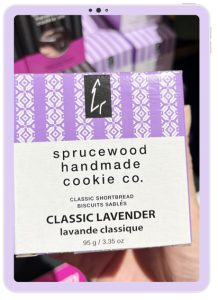

The delicate floral flavour of lavender is trending in both food and drinks.
Well known for their classic sweet and savoury shortbread cookies, Sprucewood is now testing a new flavour – lavender! Founder Chef Mark Pollard sources the culinary lavender from Niagara region.
In the beverage category, County Bounty Artisanal Sodas are created by Dodie Ellenbogen, a former farmer originally from Prince Edward County. When gifted with a large flat of strawberries that were about to spoil, Dodie started making cordials and later began creating bottled / canned sodas with unique combinations of local flavours. The Lavender & Lemon Herbs Soda combines culinary lavender with lemon basil or lemon balm.
Trend #4: Beet It!
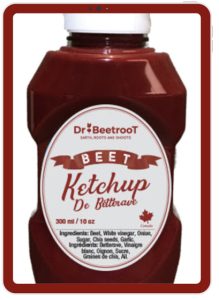 Beets weren’t a big part of Anan Palanichamy’s diet growing up in India. But when the food processing engineer moved to Winnipeg Manitoba, he discovered their great taste and nutritional properties. The beet ketchup is made with beets grown in Portage la Prairie. Ingredients include beets, chia seeds and garlic. The sugar content of the beet ketchup is comparable to tomato ketchup, but is low sodium with only 5 mg per 1 tablespoon serving compared to about 150 mg in ketchup. The company also offers beet hummus, beet chips and beet chutney.
Beets weren’t a big part of Anan Palanichamy’s diet growing up in India. But when the food processing engineer moved to Winnipeg Manitoba, he discovered their great taste and nutritional properties. The beet ketchup is made with beets grown in Portage la Prairie. Ingredients include beets, chia seeds and garlic. The sugar content of the beet ketchup is comparable to tomato ketchup, but is low sodium with only 5 mg per 1 tablespoon serving compared to about 150 mg in ketchup. The company also offers beet hummus, beet chips and beet chutney.
Trend #5: On-the-go Breakfast
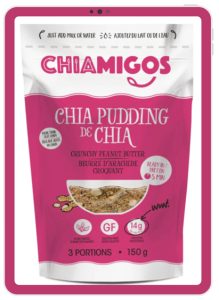
It all started with a desire to have an easy, delicious breakfast while camping. Driven by their love of the outdoors, siblings Peter, Chris and Katie Phillips created Chiamigos – a convenient plant-based breakfast or snack. Unlike typical chia pudding which needs to set overnight, Chiamigos is ready in 5 minutes and can be made with hot or cold water, milk or plant-based beverage. The Crunchy Peanut Butter flavour contains 10 grams of fibre, 14 grams of protein and 6 grams of sugar per serving.
BONUS!

I was starstruck meeting Colin Asuncion, one of the finalists in the 2019 season of The Great Canadian Baking Show! Colin also appeared in a holiday baking special in 2021 and is a Toronto-based singer, stage performer, marketing manager and of course – star baker!





 .
. 







